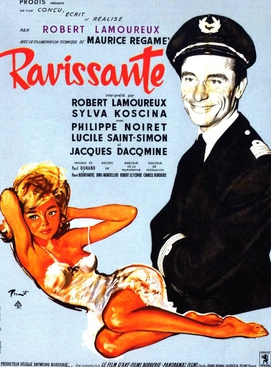Ravishing
Ravishing is a term often used to describe something or someone that is extraordinarily beautiful or attractive. The word is frequently employed in literature, fashion, and everyday language to convey a sense of stunning beauty or allure.
Etymology[edit | edit source]
The term "ravishing" originates from the Middle English word ravisshen, which means to seize or carry off. Over time, its meaning evolved to describe something that captures or seizes one's attention due to its beauty.
Usage in Literature[edit | edit source]
In literature, "ravishing" is often used to describe characters or scenes that are exceptionally beautiful. For example, in Shakespearean plays, characters may be described as ravishing to emphasize their physical beauty or charm.
Usage in Fashion[edit | edit source]
In the world of fashion, "ravishing" is a term frequently used to describe clothing, accessories, or individuals that are exceptionally stylish and attractive. Fashion magazines and critics often use the term to highlight standout looks on the red carpet or in fashion shows.
Cultural Significance[edit | edit source]
The concept of ravishing beauty has been a significant aspect of various cultures throughout history. In art, literature, and cinema, the portrayal of ravishing beauty often serves to captivate audiences and convey deeper emotional or aesthetic themes.
Related Terms[edit | edit source]
See Also[edit | edit source]
References[edit | edit source]
External Links[edit | edit source]
Search WikiMD
Ad.Tired of being Overweight? Try W8MD's NYC physician weight loss.
Semaglutide (Ozempic / Wegovy and Tirzepatide (Mounjaro / Zepbound) available. Call 718 946 5500.
Advertise on WikiMD
|
WikiMD's Wellness Encyclopedia |
| Let Food Be Thy Medicine Medicine Thy Food - Hippocrates |
Translate this page: - East Asian
中文,
日本,
한국어,
South Asian
हिन्दी,
தமிழ்,
తెలుగు,
Urdu,
ಕನ್ನಡ,
Southeast Asian
Indonesian,
Vietnamese,
Thai,
မြန်မာဘာသာ,
বাংলা
European
español,
Deutsch,
français,
Greek,
português do Brasil,
polski,
română,
русский,
Nederlands,
norsk,
svenska,
suomi,
Italian
Middle Eastern & African
عربى,
Turkish,
Persian,
Hebrew,
Afrikaans,
isiZulu,
Kiswahili,
Other
Bulgarian,
Hungarian,
Czech,
Swedish,
മലയാളം,
मराठी,
ਪੰਜਾਬੀ,
ગુજરાતી,
Portuguese,
Ukrainian
Medical Disclaimer: WikiMD is not a substitute for professional medical advice. The information on WikiMD is provided as an information resource only, may be incorrect, outdated or misleading, and is not to be used or relied on for any diagnostic or treatment purposes. Please consult your health care provider before making any healthcare decisions or for guidance about a specific medical condition. WikiMD expressly disclaims responsibility, and shall have no liability, for any damages, loss, injury, or liability whatsoever suffered as a result of your reliance on the information contained in this site. By visiting this site you agree to the foregoing terms and conditions, which may from time to time be changed or supplemented by WikiMD. If you do not agree to the foregoing terms and conditions, you should not enter or use this site. See full disclaimer.
Credits:Most images are courtesy of Wikimedia commons, and templates, categories Wikipedia, licensed under CC BY SA or similar.
Contributors: Prab R. Tumpati, MD

